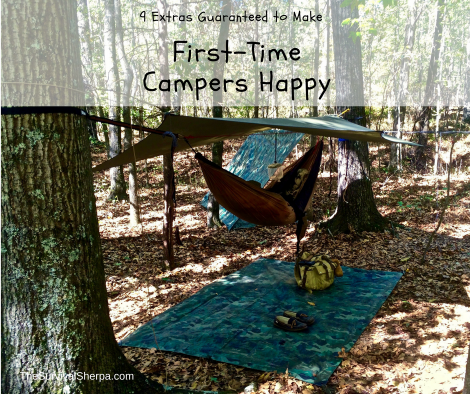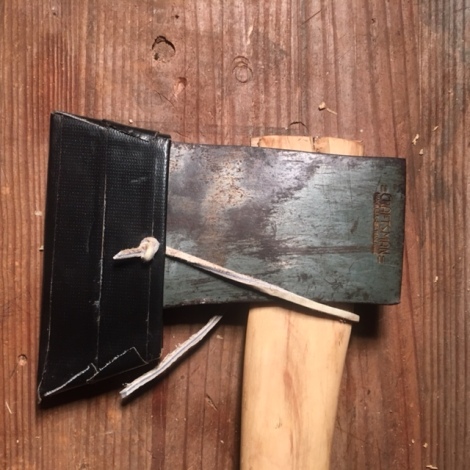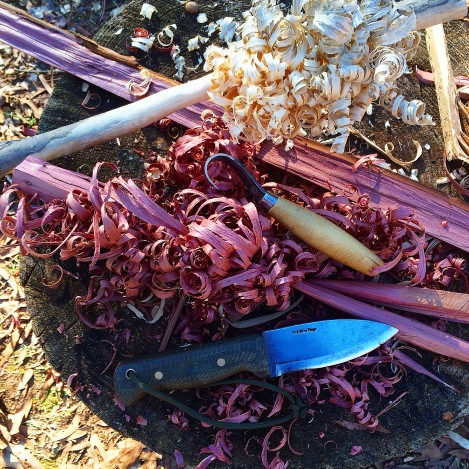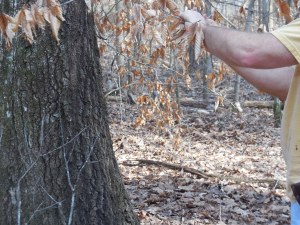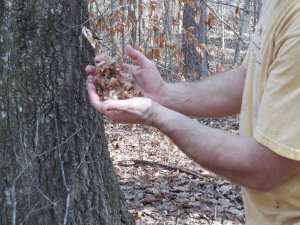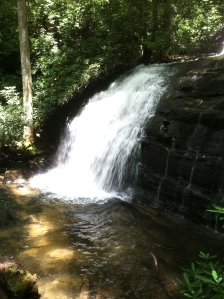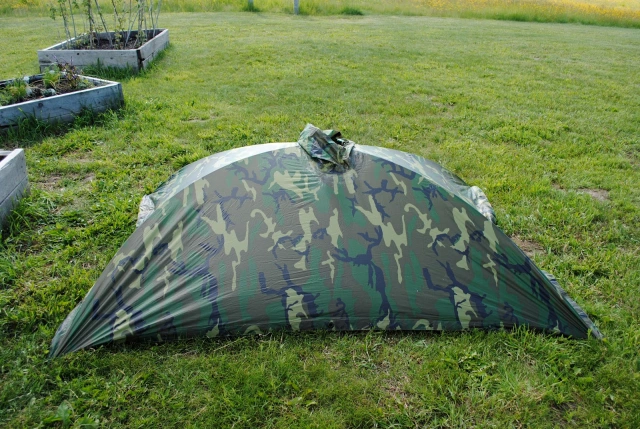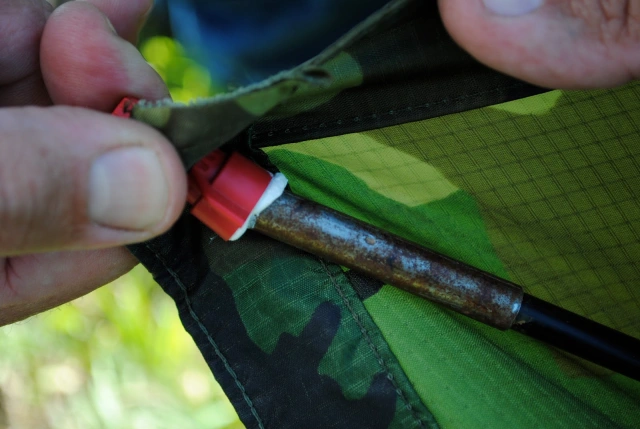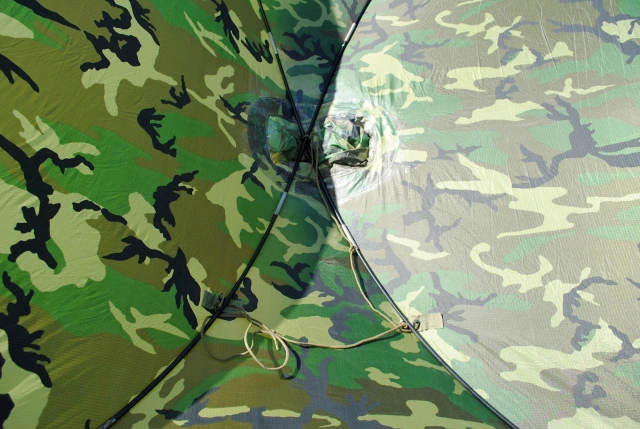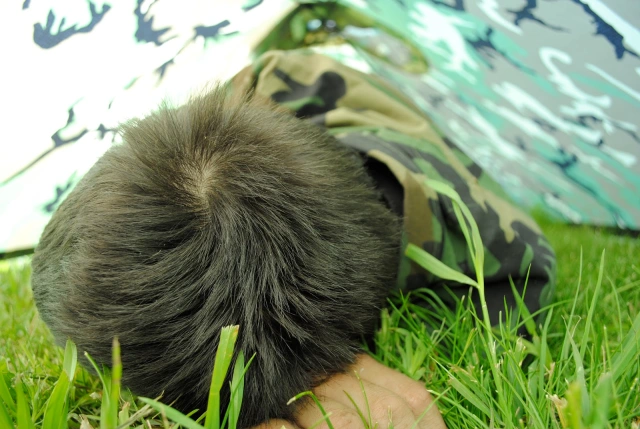by Todd Walker
“We do not go to the green woods and crystal waters to rough it, we go to smooth it. We get it rough enough at home.”
~ George Washington Sears – “Nessmuk”, Woodcraft
A tenderfoot’s first camping trip will be remembered forever, good or bad. Whether car camping or backpacking, comfort in the woods should be the aim. There are no “Roughing It” badges awarded in camp life. The more pleasant the experience, the more likely you’ll want to go again.
New to camping? Our last article on knife craft may be of interest to you. Click on this highlighted link to read more.
No matter how many times I camp, I’ve learned that the following items in my pack are multifunctional and comfort-adders to my outdoor experience. Add these to your normal camp checklist.
Extra Tarp(s)
Shelter comes to mind first. My ENO ProFly rain offers enough cover for my hammock and personal gear. If teaching a class at gatherings/campouts, I haul more stuff which needs to be sheltered. Car camping affords the luxury of packing several tarps whether you sleep in a hammock or tent.

Besides my ENO Rainfly, I use extra tarps for equipment/supplies and a welcome mat under my hammock.
Employ an extra tarp as a ground cover under your tent or a welcome mat under your hammock. I find rolling out of my hammock onto a dry surface comforting. No wet/dirty feet to dry before lacing my boots. My haversack and extra gear rests on this vapor barrier preventing ground moisture from transferring while I sleep.
An extra tarp has come in handy on trips when it rained sideways. Tarps can be quickly set up over your camp kitchen or eating area for shade and rain protection. Think of being cooped up in your sleeping quarters on a rainy day in the woods. An 8×10 tarp will provide a dry outdoor living room to enjoy the sound of falling rain while whittling a tent stake, watching wilderness TV (a.k.a. – campfire), or cooking meals. Be sure to set your tarp high enough over a campfire so it won’t melt – 7-8 feet works with an open fire.
Poly tarps are relatively cheap but add max comfort when camping. Don’t hit the trail without an extra one or three. And blue tarps are okay. In fact, one of my Pathfinder instructors once told me that blue is easier to spot in the woods than other colors if you need to be found.
Extra Cordage
If you’re like me, my hammock and rain fly has cordage attached and ready for quick setup. Did you bring enough line to hang extra tarps and stuff? And what line should you use?
I like 550 paracord for certain jobs like ridge lines. However, braided nylon tarred bank line comes in a compact spool with hundreds of feet. A one pound spool of #36 bank from Wally World offers over 500 feet of cordage. Don’t want to take a whole spool, pull off 50 foot hanks and stow in your pack. Below is a photo of how I store hanks of cordage…
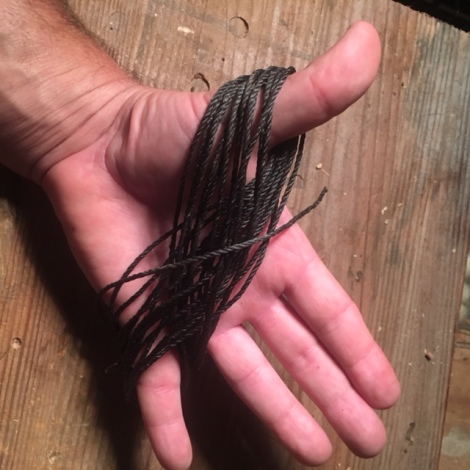
Take the hank of cord off your fingers, wrap the loose end a few times in the middle of the hank, and tie with a half-hitch.
There are too many uses around camp for rope to not pack extra.
Extra Towels
No matter the season, it is my practice, when water is available, to sleep clean. However, when water is scarce, I whip out the wipes and clean a day of sticky, sweaty funk off my body.
Get small packs designed for diaper bags if backpacking. If weight isn’t an issue, buy the jumbo container to clean the whole family. They’re also handy to clean dirty picnic tables and pet fur. Moose and Abby, our fur-babies, make it their mission to rub their neck in the most disgusting, rotted, foul-smelling stuff in the woods.
When cooking at home, I sometimes hang a hand towel over my shoulder like my daddy. I do the same at camp. Only difference is I tuck it into my belt or dangled from my front pocket. I wipe my hands often while cooking and use it as a napkin while eating. When done, toss the towel in a ziplock bag and stow it in my cook kit.
I carry both cloth and paper towels. Used paper towels are burned or packed out. The beauty of cloth towels is they can be washed and hung out to dry.
Extra Lighting
I have three primary sources of light when I camp: Luci solar lantern, head lamp, and LED Light Specs. Here’s the breakdown of each…
I clip my Luci lantern on my hammock ridge line for nighttime illumination (see top photo). This cool solar lantern never runs out of batteries. Just inflate it like a beach ball and choose the setting; low, high, or flashing. It lights up my entire hammock area and only weighs 4 ounces.
A head lamp frees you to use both hands for camp tasks. Keep a set of spare batteries taped together and labeled with the date of manufacture. This allows you track when you need to add fresh batteries in your pack. If you purchase a head lamp, buy one with a red light to keep your camping mates happy. Nothing ticks folks off more than having a white, blinding light in the eyes.
My reading glasses have LED lights on the outside of both lenses. I know. Coolest thing ever! I use these to find stuff hidden in my pack at night. When I turn in for the evening, they go in my hammock pouch along with my head lamp.
Extra Plastic Bottle
This tip is for our guy readers. Sorry ladies, not much help to you. To stay nice and cozy in your hammock or tent when nature calls, a sports drink bottle is a reliving solution. Do your business carefully, cap the bottle, and sit it aside.
On a funny note, one of our Georgia Bushcraft members had a horrible hammock experience. It seems he forgot his mosquito net was surrounding him as he attempted to toss the contents of the open bottle. Not a happy camper!
Extra Toilet Paper
While we’re on the subject of bodily functions, you don’t want to run out of this essential item! There are ways to perform the needed paperwork without TP, but a novice may find them a bit primitive. Cowboy toilet paper is an option. So pack plenty of your favorite, soft wipes, even at campgrounds.
Extra Plastic Bags
Do not forget these! Pack several different ziplock sizes. They keep stuff dry and sealed or wet stuff separate from your dry stuff. Use them to pack trash and other dirty stuff out when you break camp.
Oh, and always pack extra trash bags, the big ones. All my packs have a minimum of two contractor grade trash bags. They’re useful for collecting firewood and keeping it dry, pack covers, and even emergency ponchos. Too many uses for these bags to list here.
Extra Shoes
Your feet are an important part to comfortably enjoying camp life. They got you to your scenic spot, now pamper them. In warm weather camp, my flip-flops are welcome relief after a long day in my boots. On colder trips, I change into my insulated leather house slippers while sitting around the campfire. Neither pair weighs much, but boy do they add comfort to my tired feet!
Extra Tape
Last, but certainly not least, is duct tape. Not all duct tape is created equal. Gorilla Tape is the strongest I’ve found. My buddy, Dave, teaches a class on making duct tape water containers. If you do it right, a water-tight container can be fashioned from this often forgotten piece of gear.
Here are just a few uses:
- Emergency first aid uses; bandages, splints, etc.
- Repair leaky tarps and tents
- Wrap a camp ax handle for temporary repair. Makes an expedient ax sheath too.
- Grommet hole repair
- Wet weather fire starter. Burns like napalm.
- Your imagination is the only limiting factor for duct tape.
These are the extras that make me a happy camper. How about you experienced campers? What extras comfort items do you take camping?
Keep Doing the Stuff of Self-Reliance,
Todd
P.S. – You can also keep up with the Stuff we’re Doing on Twitter, Pinterest, Google +, YouTube, Instagram, and Facebook… and over at our Doing the Stuff Network.
P.P.S – If you find value in our blog, Dirt Road Girl and I would appreciate your vote on Top Prepper Sites! You can vote daily by clicking here or on the image below. Check out all the other value-adding sites while you’re there…
Thanks for Sharing the Stuff!
Copyright © by Survival Sherpa: In light of the recent theft of all my content by a pirate site, my sharing policy has changed. I do not permit the re-posting of entire articles from my site without express written consent by me. My content on this site may be shared in digital form (200 words or less) for non-commercial use with a link back (without no-follow attribute) to the original article crediting the author. All photos, drawings, and articles are copyrighted by and the property of Survival Sherpa. You are more than welcome to share our photos and articles on social media for educational purposes as long as you link back to the original article/photo with credit to the author.

